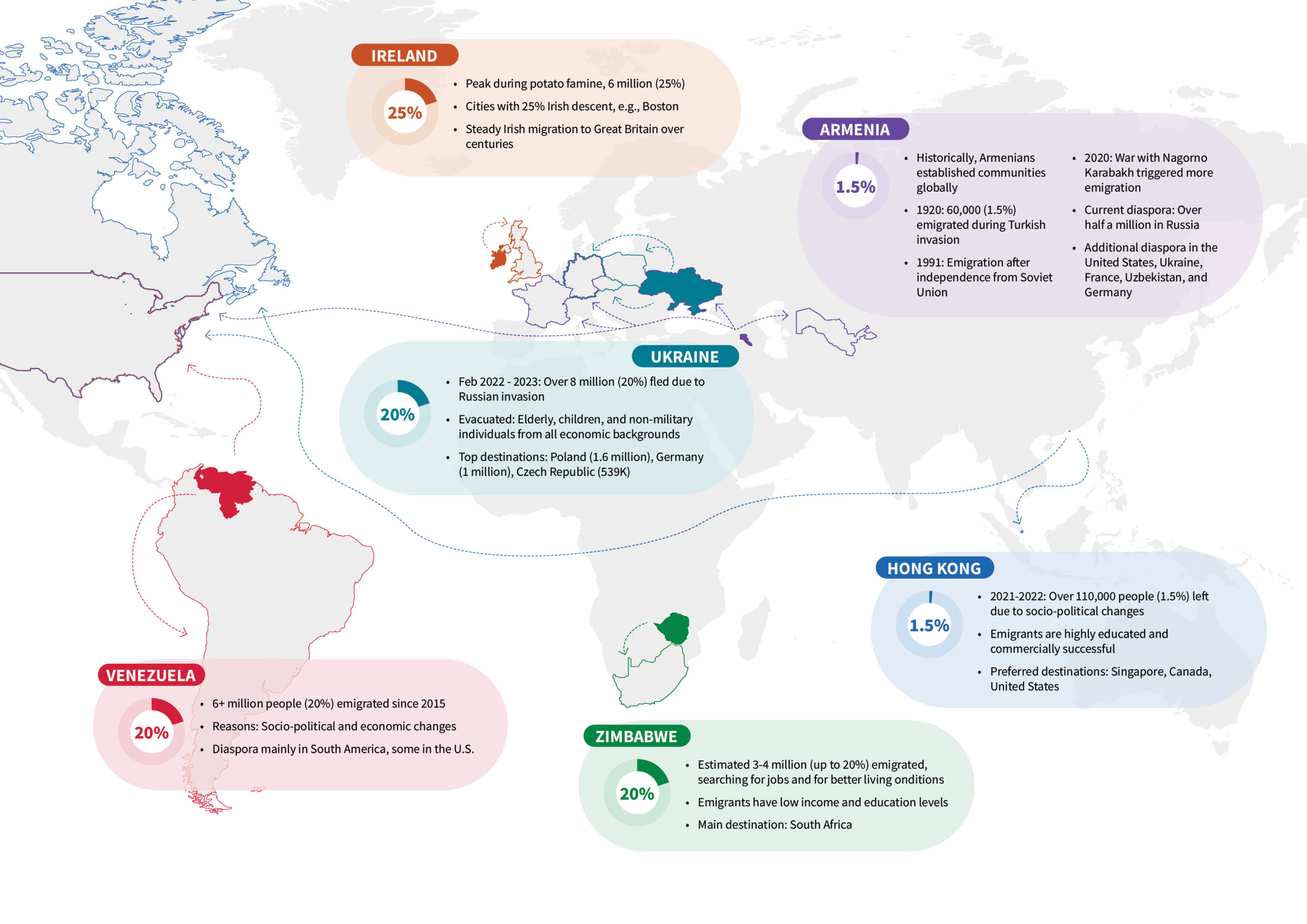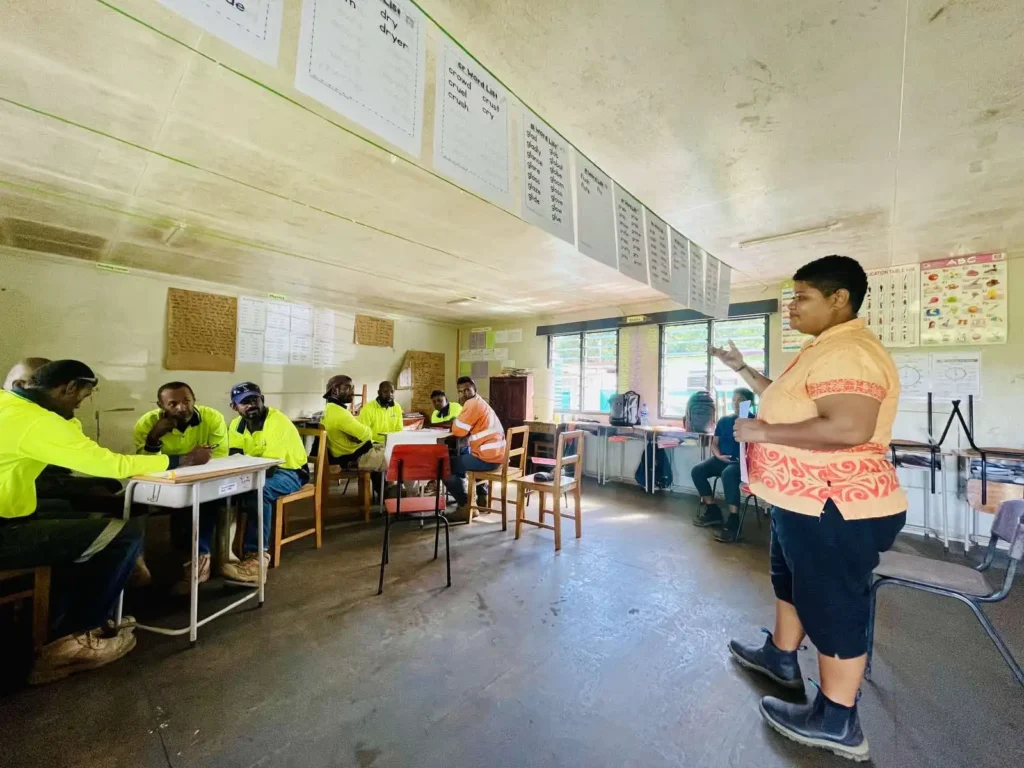
This four-part series considers why and how engaging a significantly large diaspora population should be a vital contributor to democratic societies.
This first article looks at how and why a diaspora should serve both the community of its members and their home country. The second article considers the power and impact of the global diaspora and what motivates members to act. Through a case study, the third article demonstrates how a Ukrainian alumni group aims to grow their connections to each other in an effort to have a direct impact on their country’s recovery efforts. The final article will highlight lessons learned to date from the case study and other examples while providing opportunities for readers across international development to continue their own involvement in and support for ongoing global diaspora programs.
Diaspora: a shared understanding and a shared vocabulary
A country’s diaspora population can be a powerful resource – providing access to economic and intellectual resources, human capital, and a cross-country connection as thousands or even millions of people relocate to (or visit) other countries. Diaspora should be understood as a potential gain to a country and not only a deficit, or a loss.
The diaspora of a country includes all the people who have left that place and reside in another country. The map shows significant migrations and the magnitude of some diaspora populations.
To discuss the potential of the diaspora for a country, we need to have a shared concept and a shared vocabulary. There are three types of diaspora:
- Forced migration, as defined by the UNHCR, is displacement as a result of persecution, conflict, and generalised violence of human rights violations. Examples include refugees impacted by the Syrian war and desperate communities such as the Rohingya people fleeing Myanmar through Bangladeshi escape routes in search of a safer home.
- Voluntary migration occurs when a community of people leave their homeland in search of economic opportunity, such as many people leaving Hong Kong over the last several years. This and other instances of voluntary migration often happen simultaneously with forced migration leading to significant populations being dispersed throughout many other countries.
- Temporary migration, often intentional by the person and encouraged by the country, may be to pursue education or other short term opportunities. An example of this would be the significant number of Indian students studying in the U.S.
Our discussion of diaspora communities will focus on forced migration populations, specifically where the situation extends over at least six months affecting a large group, and the group may include voluntary migrants as well. Such a group is likely to have a strong affinity back to the home country. Two examples of these types of communities, connected through political, cultural, and historic bonds, are those forced to flee Ukraine over the past year and the people who have left Venezuela due to changes in the economic structure. All together, as seen on the map, the scale, and therefore the potential of diaspora communities is vast.
Diaspora: a shared culture and a shared experience
As each culture of the world is unique, each diaspora population is likely to reflect the national (or regional) culture and the circumstances that are causing the migration. As a group, they are likely to share some economic and cultural characteristics. While the upheaval that causes mass migration may affect all socio-economic profiles, the people with access to resources are the likeliest to emigrate.
With forced migration, because it is generally unexpected and urgent, when people reach their new location, they often require support to deal with economic and language challenges often while trying to maintain their family structures. They will naturally look to those who have come before them, which is the existing diaspora, that can strongly affect the connections for finding work and other types of support. Any efforts to create a community from the broad diaspora has to reflect the unique cultural characteristics and address the specific economic and social situation.
Diaspora: A community of purpose
Overall, the diaspora can be called on to support the country of origin and each other in several ways. From the earliest moment, the need for emigrants is to find a place where they may be welcomed and supported which is most likely to be done by compatriots. Once established in their new country, members of the diaspora are likely to be highly motivated to support their home country and those left in the country of origin. With a mass migration, there are likely to be specific and time-sensitive reasons to maintain close ties to the home country whether to defend the country, to provide resources to those back home, or to compensate for possible “brain drain.”
Recognising that members of the diaspora are spread across different countries and are at different stages needing to rebuild their lives, means that a structured approach is needed to address the varied needs of the diaspora. An organised approach to identifying, connecting, and mobilising members builds and strengthens the relationships between members. Relationships can be fostered between influential individuals in the new country and old which are key to public diplomacy. Concepts such as engaging transnational alumni reminds us that members are resources to each other as they remain personally and professionally connected to multiple countries on a regular basis.
Part of the purpose of establishing an organisational structure is to introduce diaspora members to a triad of players: international trade and investment colleagues, regional and local organisations from their home country, and international development donors and partners funding sustainable redevelopment. This can lead to a diaspora’s better understanding of the needs and aims for the home country – and how they can play an active role – including possible paths to economic reform, growth, and opportunities to increase inbound financial resources. Examples here include targeted capacity-building (e.g., gender equity and inclusion, governance reform) training programs sponsored by overseas aid and development programs, access to donors and international development organisations and agencies, and international scholarships provided by donors.
Our next article will expand on the benefits and structure of an organised and engaged diaspora community to make a better lifestyle for those forced to flee and those left behind, as well as furthering civil society.
So many people are part of a diaspora, even as part of a second generation, that it is time we look at the opportunities and potential for these communities to be organised to help themselves and for the greater good.
By Gretchen Dobson and Kathy Edersheim
Gretchen Dobson and Kathy Edersheim are co-authors of this four-part series on building diaspora communities. Gretchen is a global engagement strategist, author and academic with 28 years’ experience across six continents. Kathy is president of Impactrics, an organisation of experts in international alumni relations, community development and leadership training that provides consulting to universities and membership organizations.



